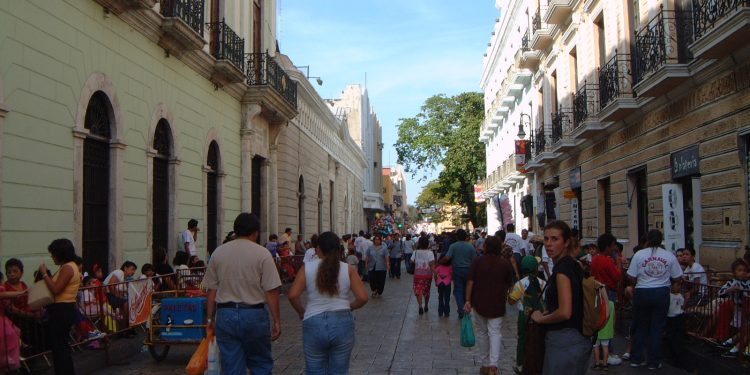Merida, known as the “white city” is the capital of the state of Yucatan on Mexico’s south east peninsula. It is one of the only cities in Mexico–and the world–that still celebrates the medieval tradition of a carnival to provide people with fun and entertainment just before the strict abstinence adhered to during the 40 days of Lent.
At the beginning of colonial times only religious and political events would move the people of Merida. Then, in the 16th Century, Luis Céspedes de Oviedo introduced balls, feasts and disguise parties in the region. At first, this provoked indignation among the people and also gave rise to much criticism. However, the events instigated by Luis Céspedes led the then state Governor, Guillen de las Casas (1578-1582), to introduce carnivals in Merida so people could enjoy a week of merriment before Lent.
By the 18th Century the carnival was celebrated in great style at the central plaza, especially on Carnaval Sunday and Tuesday, when the wealthy citizenry of the city would parade before the curious, poor indigenous people. Little by little the middle classes joined-in the festivities that have today become world famous for their elegance and originality.
After the Independence of Mexico the Merida Carnival lost some of it shine and by the middle of the 19th Century, the event only lasted for three days–later extended to five. During that time, students and people in costumes and masks would run through the streets singing and dancing to music with a very clear Cuban rhythm. Huge balls were also held in elegantly-decorated ballrooms with 400 or 500 couples on the dance floor at one time.
The market price of sisal (or henequen) had a great influence on the quality of Merida’s Carnivals, and from 1889 to 1926, when the prices and yields were at their peak, the carnivals were quite spectacular.
Today, the Merida Carnival is organized by a local committee. The carnival is not as intense and strident as those of Veracruz or Mazatlan: it is quieter and more family-oriented due to the cultural traits of the Yucatan people who tend to exhibit a gentler and more serene character than those of their coastal compatriots.
The Yucatan costumes and dance steps don’t have the unrestrained tone of other regions, either; instead they are more reserved, but very elegant nonetheless. For people living in Merida, the carnival presents a welcome break from their daily routines and an opportunity to share free time with other members of their local communities while enjoying the parades and partying.
The carnival in Merida is a must-see for anyone visiting the Yucatan region from March 1st to March 9th. The organizing committee has festivities planned for every day of carnival–from the inaugural ceremony of burning “Bad Moods” to the burial of Juan Carnaval, where his crying “widow” reads from his will what he left Merideños and their authorities. If you understand Spanish, you’ll find the ceremony is hilarious, and it’s also the most highly-attended event of the carnival.
Every day the carnival features a different parade, each one representing the life and traditions of the Yucatan region. You’ll also enjoy fireworks, music, dancing and general merry-making–just watch out for students who, for fun, love to throw eggshells filled with flour (some stained dark blue) at unsuspecting attendees. It’s probably a good idea to leave your ‘Sunday Best’ clothes indoors.
See Also: Travel Guide to Merida
Mexico in your inbox
Our free newsletter about Mexico brings you a monthly round-up of recently published stories and opportunities, as well as gems from our archives.

